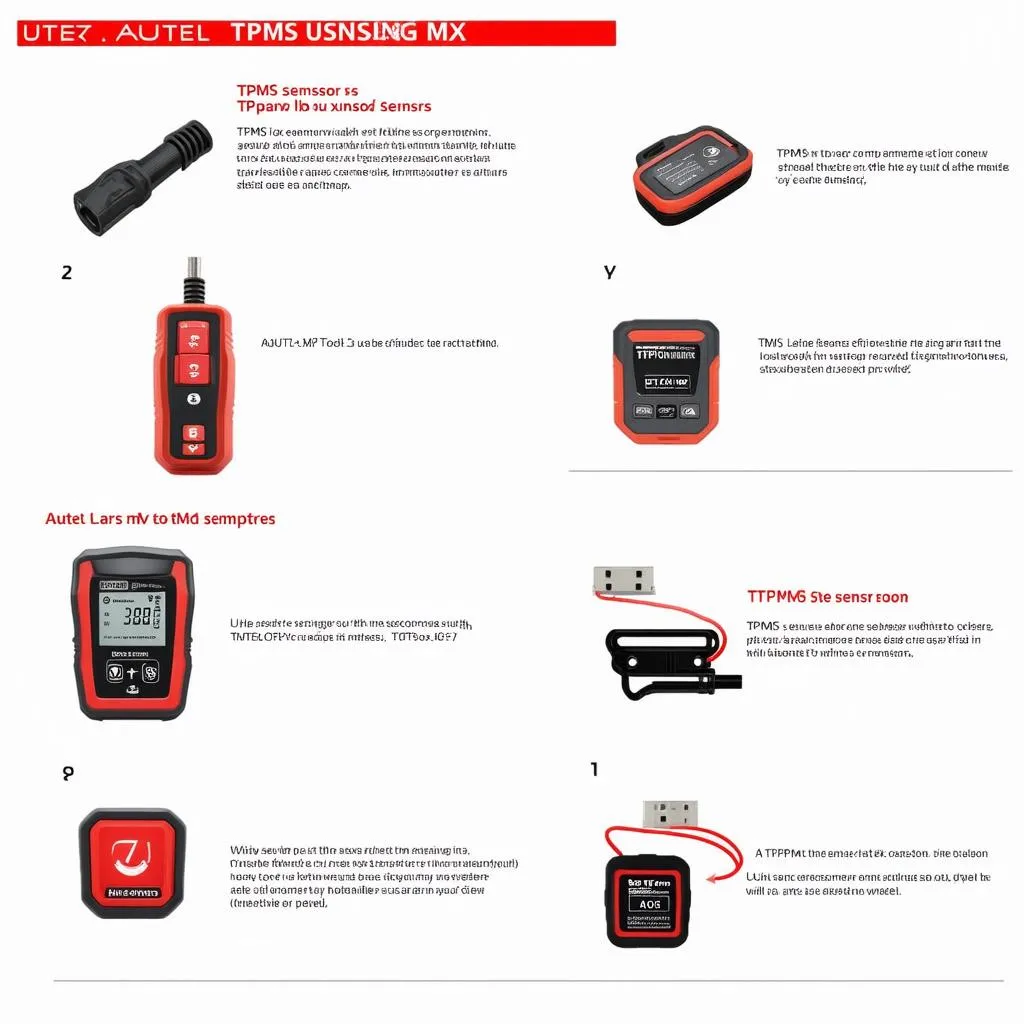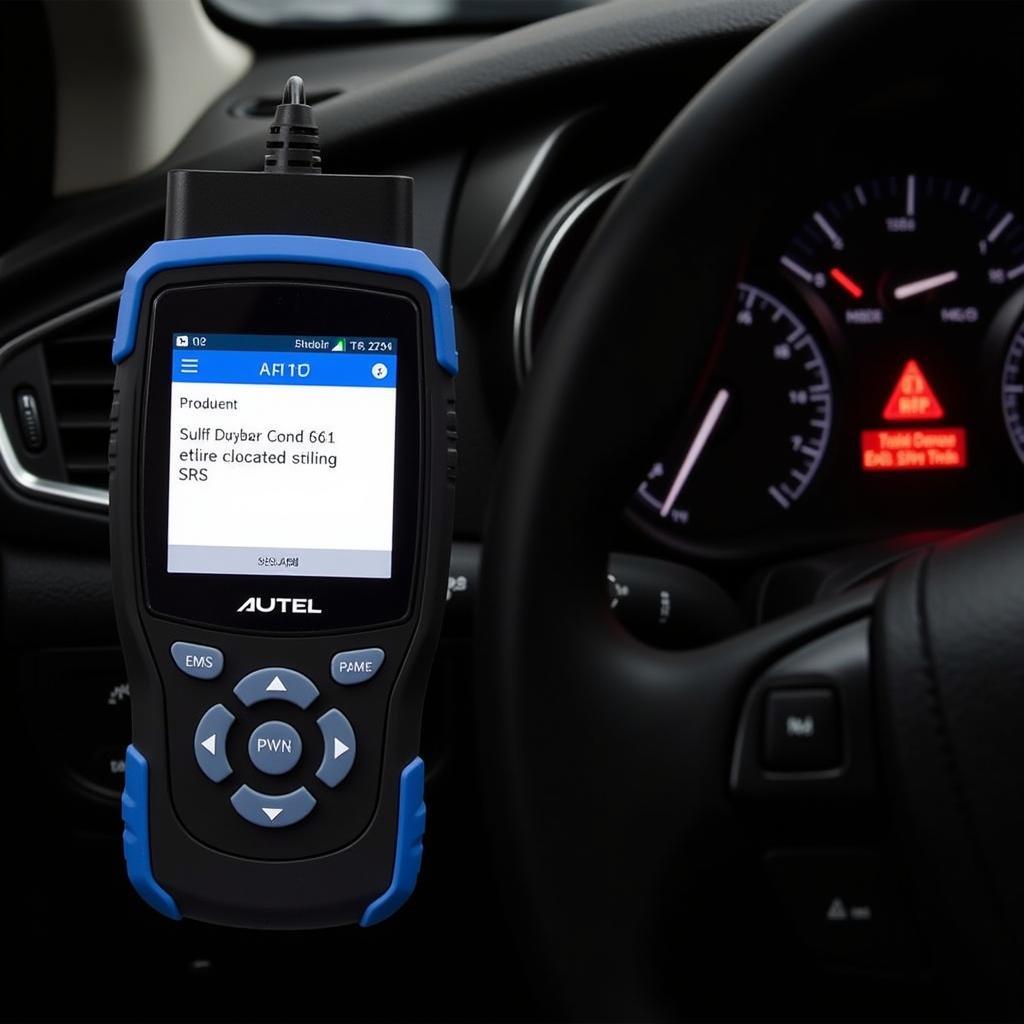Have you ever encountered a situation where your vehicle’s TPMS light wouldn’t go off, even after you had inflated the tires to the proper pressure? This could be a sign of faulty TPMS sensors that need reprogramming. The Autel MX series of TPMS tools are known for their efficiency and user-friendliness in handling this task. In this comprehensive guide, we’ll delve into the world of Autel MX TPMS sensor programming, covering everything you need to know from its significance to practical tips.
Understanding TPMS Sensor Programming
Why Is TPMS Sensor Programming Important?
Imagine a scenario where you’re driving on a highway, oblivious to a slow leak in one of your tires. You might not notice the gradual decrease in pressure until it’s too late, potentially leading to a blowout and a dangerous situation. This is where TPMS (Tire Pressure Monitoring System) comes in, acting as a silent guardian for your safety.
TPMS sensors are strategically placed within each tire, constantly monitoring pressure levels. When the pressure falls below a pre-set limit, the system triggers a warning light on your dashboard, alerting you to the issue. However, the TPMS system needs to be properly calibrated and programmed to ensure its accuracy and effectiveness. This is where Autel MX tools come into play.
The Role of Autel MX in TPMS Sensor Programming
Autel MX tools are specifically designed to facilitate the programming and reprogramming of TPMS sensors. These tools allow technicians to identify the sensor ID, read sensor data, activate sensors, and learn them into the vehicle’s system. The process involves a series of steps, including:
- Reading Sensor ID: This step involves identifying the unique ID of each sensor within the tire.
- Sensor Activation: The Autel MX tool sends a signal to the sensor, activating it and ensuring it’s ready for programming.
- Sensor Programming: The tool then programs the sensor ID into the vehicle’s TPMS module, establishing a communication link between the sensors and the system.
- Sensor Learning: This final step allows the vehicle’s computer to “learn” the location of each sensor and its corresponding tire position.
Autel MX TPMS Sensor Programming: A Step-by-Step Guide
Prerequisites for Programming TPMS Sensors
Before embarking on the programming process, it’s crucial to ensure you have the necessary tools and information:
- Autel MX TPMS Tool: Choose an Autel MX tool compatible with your vehicle’s make and model.
- Vehicle Information: Gather details such as the vehicle’s year, make, model, and VIN.
- Sensor IDs: If replacing sensors, note down the new sensor IDs.
- TPMS Sensor Type: Determine the type of sensors you’re using (OEM, aftermarket, etc.).
Programming Steps
- Connect the Autel MX Tool: Connect the Autel MX tool to your vehicle’s diagnostic port.
- Select Vehicle: Choose the appropriate vehicle make and model from the tool’s menu.
- Identify Sensors: Using the tool, scan and identify the existing TPMS sensors within the tires.
- Activate Sensors: Send activation signals to the sensors to ensure they’re ready for programming.
- Program Sensor IDs: Enter the new sensor IDs (if replacing sensors) or confirm the existing IDs.
- Learn Sensors: Allow the tool to learn the sensor IDs into the vehicle’s TPMS module.
- Test and Verify: After completing the programming, perform a test drive to verify the sensors are working correctly and the TPMS light has extinguished.
Frequently Asked Questions
Can I program TPMS sensors myself?
While you can purchase Autel MX tools for home use, programming TPMS sensors is a specialized task that requires knowledge of your vehicle’s system and the ability to handle complex diagnostic procedures. It’s generally recommended to have the work performed by a qualified automotive technician, especially if you’re unfamiliar with TPMS systems.
How do I know if my Autel MX tool is compatible with my vehicle?
Autel provides detailed compatibility information on their website. You can check the specifications of your chosen Autel MX tool to see if it supports your vehicle’s make and model.
What are the signs of a faulty TPMS sensor?
Some common indicators of faulty TPMS sensors include:
- TPMS light flashing continuously: This often indicates a sensor malfunction.
- TPMS light staying on even after inflating tires: This could point to a faulty sensor or a programming error.
- Inaccurate pressure readings: If the readings on the dashboard don’t match the actual tire pressure, it might be a sensor issue.
Conclusion
Programming TPMS sensors is an essential procedure that ensures the accuracy and effectiveness of your vehicle’s TPMS system, enhancing your safety and peace of mind. Autel MX tools provide a reliable and user-friendly solution for handling this task. Remember to consult with a qualified technician if you’re unsure about any aspect of the process.
If you need further assistance with TPMS sensor programming or have any questions related to diagnostics tools, feel free to contact us on WhatsApp: +84767531508. Our team of automotive experts is available 24/7 to provide support and guidance.
 TPMS sensor
TPMS sensor
 TPMS tool
TPMS tool
 TPMS programming process
TPMS programming process


